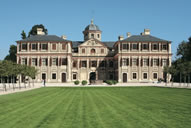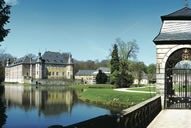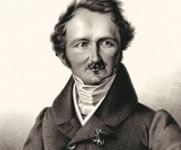Famous People
- A successful symphony of art and nature
- A paradise born of the Age of Enlightenment
- Fruits borne of strong women
- The “Sun King” of Saxony
- A romantic symbol of German history
- “My heart belongs to my garden”
- Royal life in modern times
- One masterpiece by two geniuses
- Monument to a passion for horticulture
- Preserving the cultural heritage
- Count Bernadotte's flower island
- Retreat for a king and philosopher
- Fairytale refuges for the fairytale king
- A Guelph family heirloom
Contact
Fruits borne of strong women
Noblesse oblige. Hermitage summer residence and Sanspareil rock garden are the extravagant legacy of Wilhelmine von Bayreuth. Her talent for garden design was passed on to her daughter, Duchess Elisabeth Friederike Sophie von Württemberg, who is immortalised as the mastermind behind the “Fantaisie” summer residence. Margravine Sibylla Augusta von Baden-Baden had “Favorite” Palace built to mark her husband's death. Princess Constance de Salm (1767-1845, wife of Prince Joseph zu Salm-Reifferscheidt-Dyck) transformed the gardens of Dyck Palace into an idyll of pure poetry. The many magnificent decorations express not only the desire for self-aggrandisement, but an almost 21st-century eagerness to incorporate her own ideas.
Bayreuth

Show on map »
“Favorite”Palace, Rastatt

Show on map »
Dyck Palace, Jüchen

Show on map »
Travel Planner
Select an option...
Location
- Bayreuth
- “Favorite”Palace, Rastatt
- Dyck Palace, Jüchen






